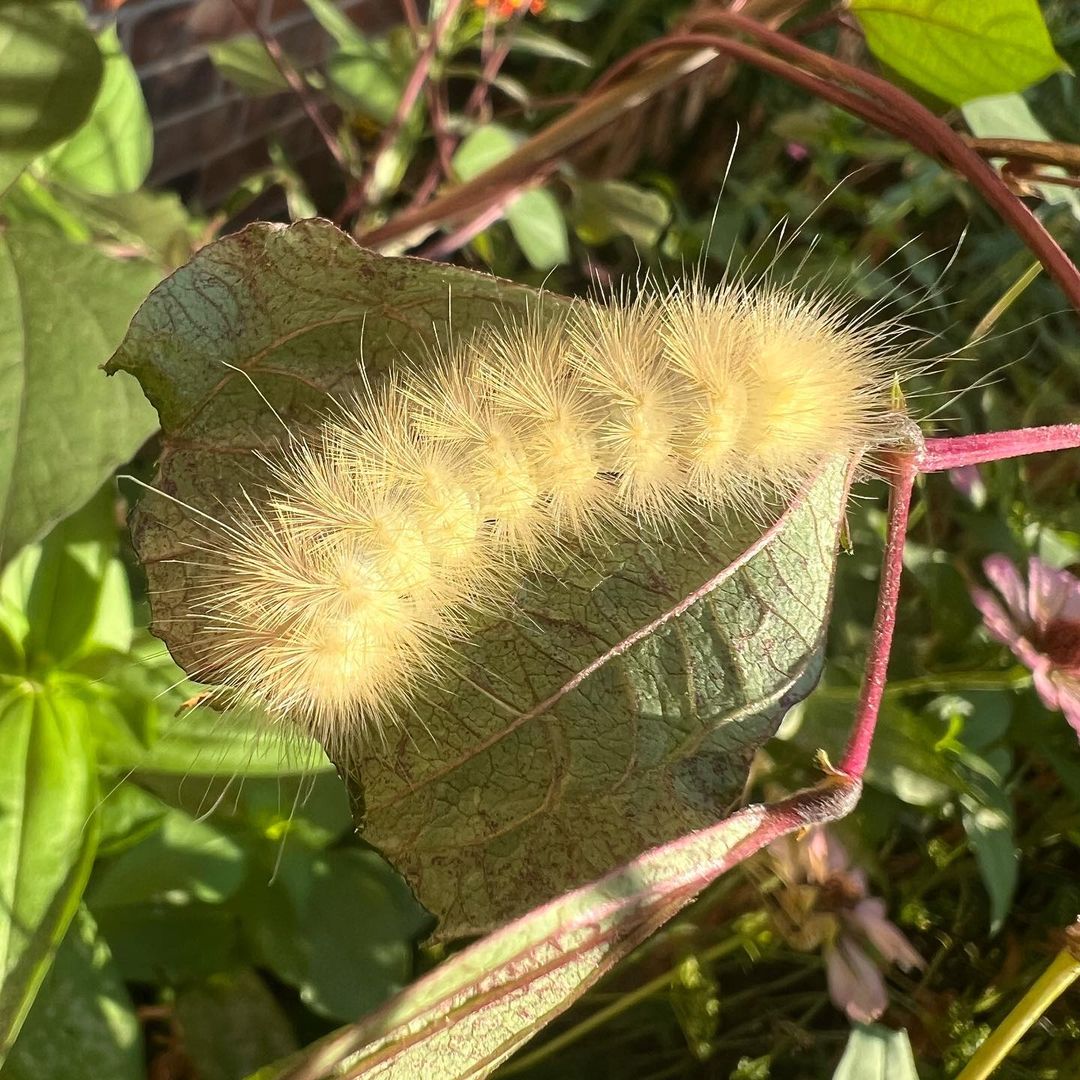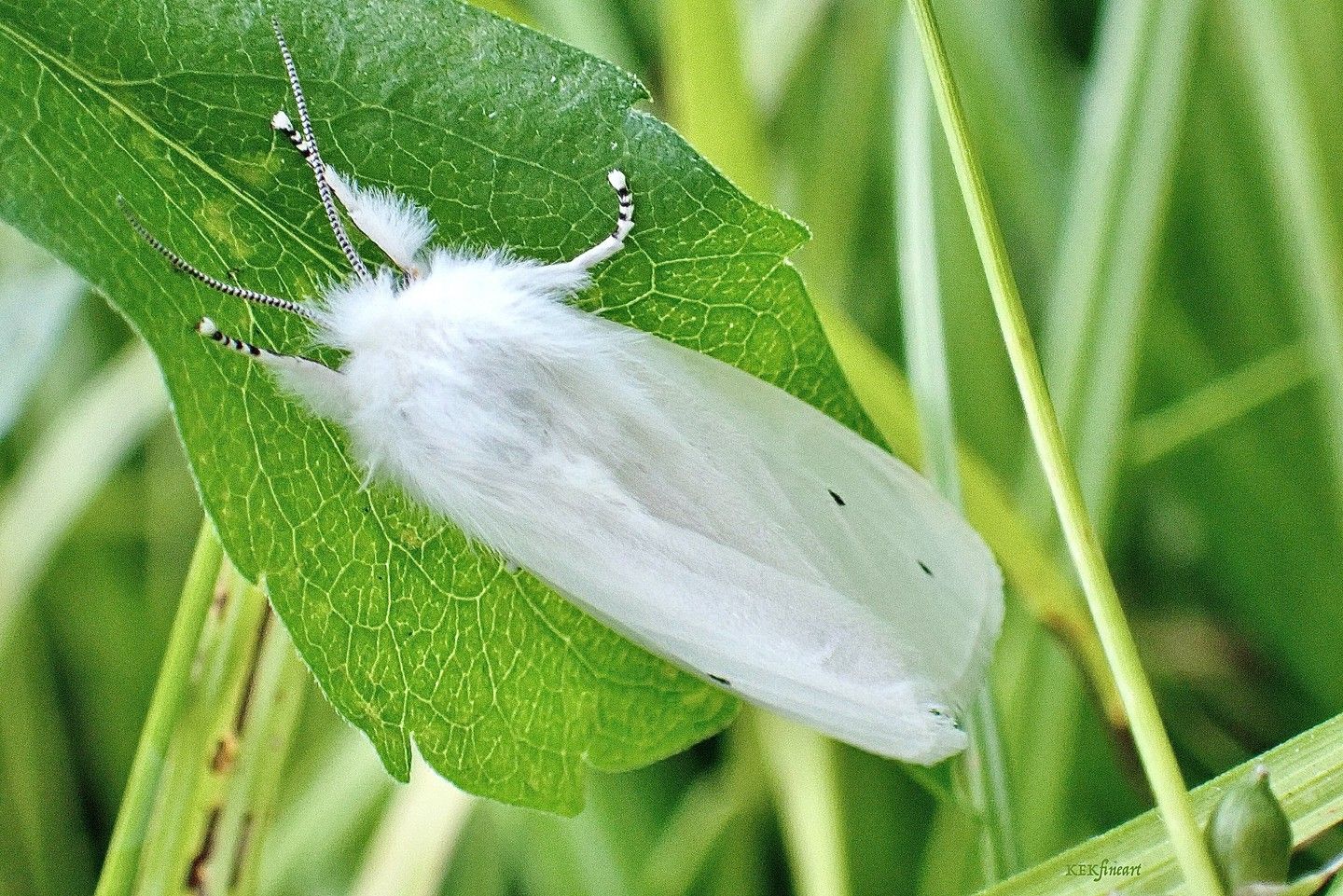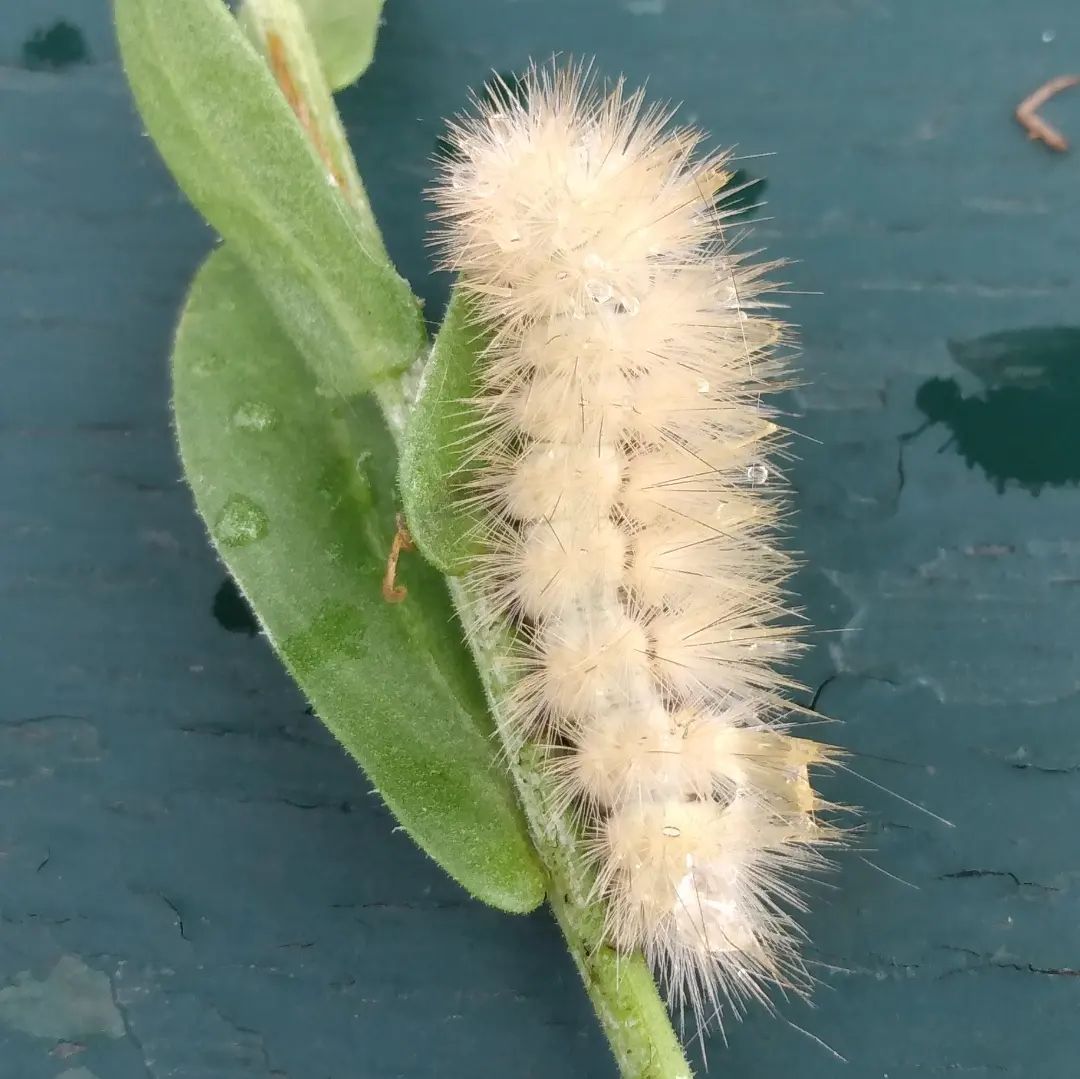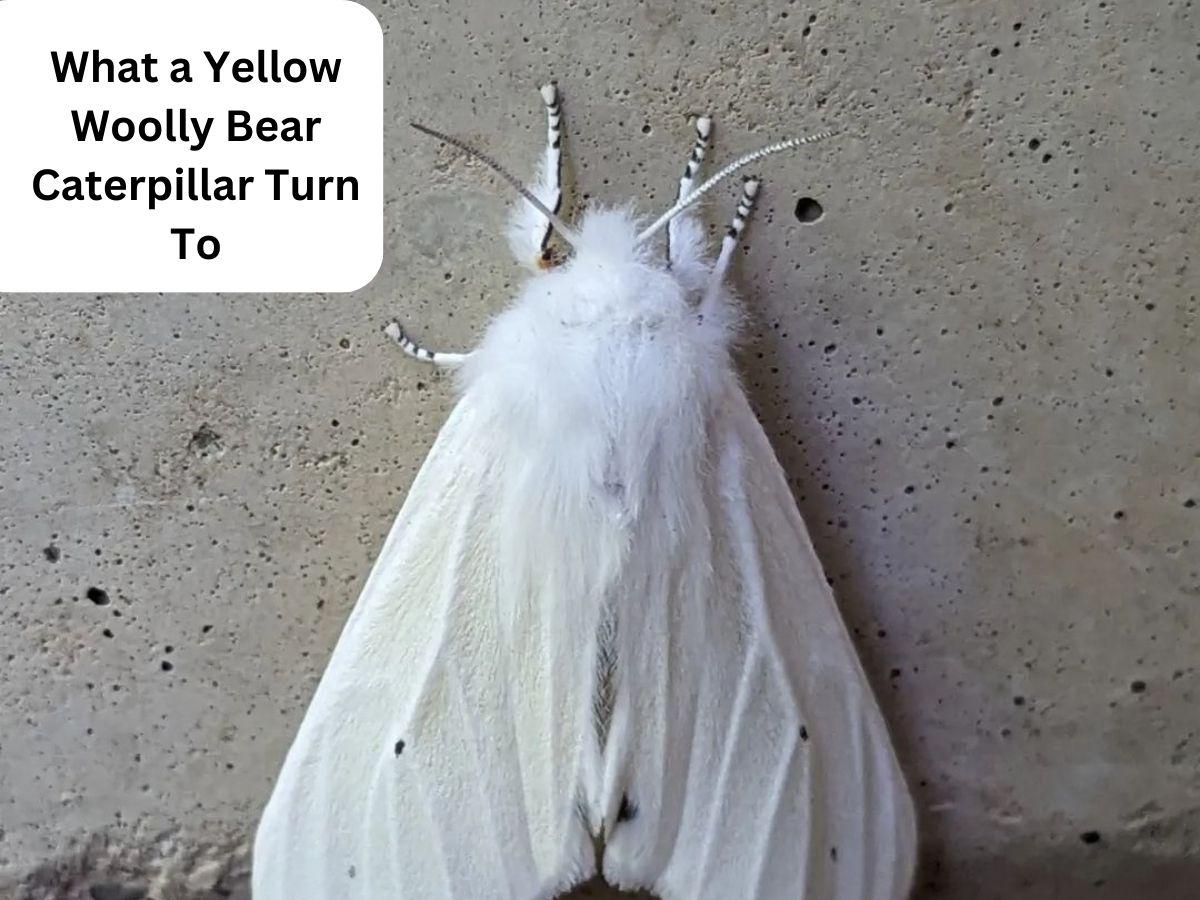Ever wondered what a yellow woolly bear caterpillar transforms into? Prepare to be amazed as we unveil the captivating secret behind this charismatic insect’s metamorphosis. From its sunny appearance to its mysterious fate, the journey of the yellow woolly bear caterpillar is nothing short of a natural marvel.
Imagine stumbling upon a plump caterpillar adorned in bright yellow fur, a vibrant contrast against the backdrop of leaves and branches. This charming creature, often encountered in gardens and woodlands, is none other than the yellow woolly bear caterpillar. But here’s the twist: This seemingly ordinary caterpillar is hiding an extraordinary destiny within its tiny, fuzzy form.
So, what does a yellow woolly bear caterpillar turn into? Brace yourself for the enchanting revelation—it transforms into a remarkable adult woolly bear moth. This metamorphosis is a testament to the wonders of nature, showcasing the intricate dance of life and transformation that takes place in even the tiniest corners of our world.
From the cheerful caterpillar to the understated elegance of the adult moth, this transformation is a journey of survival and adaptation. The once-bold yellow transforms into a more subdued palette, allowing the adult moth to seamlessly blend into its environment. But don’t be fooled by the change in appearance—the adult woolly bear moth plays a crucial role in pollination and the ecosystem, underscoring the delicate balance of nature.
Below, we’ll delve deeper into the mesmerizing stages of this transformation, uncovering the hidden intricacies that make the yellow woolly bear caterpillar’s journey a story worth sharing. Join us as we unravel the captivating tale of this tiny creature’s evolution, painting a vivid picture of nature’s artistry at its finest.
What is a yellow woolly bear caterpillar
The yellow woolly bear caterpillar, also known as the yellow bear caterpillar or the Spilosoma virginica, is a type of caterpillar belonging to the arctiid moth family. It is characterized by its distinctive appearance, which includes a yellow or orangish-yellow coloration and a dense covering of soft, bristle-like hairs that give it a “woolly” or fuzzy texture.
These caterpillars typically have a plump and cylindrical body with a segmented structure. The most striking feature is their vibrant yellow color, which stands out prominently against foliage or other surfaces. The covering of fine, hair-like structures on their body adds to their unique appearance. These hairs can be both a defense mechanism and a means of insulation for the caterpillar.
The yellow woolly bear caterpillar’s appearance is not only eye-catching but also serves as a form of protection. The hairs can be irritating to potential predators, deterring them from attempting to consume the caterpillar. Over time, the caterpillar undergoes several stages of growth, and its coloration may change slightly. After this larval stage, it eventually pupates and transforms into an adult moth, which may have a different appearance altogether.
It’s worth noting that while the yellow woolly bear caterpillar’s appearance is distinct, it should not be confused with the more well-known black and orange “woolly bear” caterpillar, which is the larval form of the Isabella tiger moth (Pyrrharctia isabella).

What does a yellow woolly bear caterpillar turn into
A yellow woolly bear caterpillar (Spilosoma virginica) transforms into an adult moth. The adult moth that emerges from the pupa is known as the Virginia tiger moth. The Virginia tiger moth (Spilosoma virginica) is a relatively small moth species with distinctive black and white markings on its wings. The adult moth’s appearance contrasts significantly with that of the caterpillar, as is common in the life cycles of many insects that undergo metamorphosis.
The transformation from a caterpillar to an adult moth involves the pupal stage. During pupation, the caterpillar undergoes significant physiological changes as it reorganizes its body structures to develop into the adult form. After this transformation is complete, the adult Virginia tiger moth emerges from the pupal case and is equipped for its aerial life as a moth.
The adult Virginia tiger moth typically has white wings with black spots and markings, although the specific patterns can vary. These moths are relatively small and are often active during the night, flying in search of mates and sources of food. They play a role in pollination and contribute to the ecosystem as part of their life cycle.
What triggers the transformation process?
The transformation process from a caterpillar to a pupa (and eventually to an adult) is primarily triggered by hormonal changes and internal physiological factors. The primary hormone responsible for initiating metamorphosis in insects, including caterpillars, is called “juvenile hormone.”
Here’s an overview of the process:
- Environmental Cues: While internal factors play a significant role, external cues such as photoperiod (the length of day and night) and temperature can influence the timing of metamorphosis. Some caterpillar species use changes in day length as a signal to prepare for pupation.
- Molting: Caterpillars go through several molts as they grow. After each molt, they enter a new “instar” stage, during which they grow in size. With each molt, the level of juvenile hormone decreases.
- Threshold Level of Juvenile Hormone: As the caterpillar continues to grow and molt, the level of juvenile hormone gradually drops. When the level of juvenile hormone falls below a critical threshold, it triggers a series of physiological changes that lead to pupation.
- Pupal Formation: The caterpillar secretes enzymes that break down its larval tissues, allowing the reorganization of its body into the pupal form. This process involves the creation of new structures, such as wings and reproductive organs, that will be needed in the adult stage.
- Pupation: The caterpillar attaches itself to a suitable surface and forms a protective casing called a pupa or chrysalis around its body. Inside the pupa, the caterpillar undergoes a remarkable transformation. Tissues break down and reorganize, and cells differentiate to form the structures of the adult insect.
- Adult Emergence: Once the transformation is complete and the adult structures are formed, the pupa splits open, and the adult insect emerges. It takes some time for the adult to fully expand its wings and harden its exoskeleton before it becomes fully functional.
In summary, the transformation process is regulated by complex interactions between hormones, genetic factors, and external environmental cues. Juvenile hormone levels reaching a critical threshold are a central trigger for the initiation of metamorphosis, leading to the caterpillar’s transformation into a pupa and subsequently into an adult insect.

How long does a woolly bear caterpillar stay a caterpillar
The duration of time that a woolly bear caterpillar remains in its caterpillar stage can vary depending on factors such as temperature, availability of food, and environmental conditions. Generally, the caterpillar stage of the woolly bear lasts for a few weeks to several months.
Woolly bear caterpillars go through several instars, which are stages of growth between molts. During each instar, the caterpillar grows larger and may have slightly different coloration. The woolly bear caterpillar typically goes through about six instars before it is fully grown and ready to pupate.
In more temperate regions, where the caterpillar is active during warmer months, it might take a few weeks for it to complete its growth and move on to pupation. However, in colder climates or during the colder seasons, the caterpillar might overwinter in its caterpillar stage, with its development slowing down significantly. This allows it to survive harsh conditions and resume its growth when the weather becomes more favorable.
Overall, the duration of the woolly bear caterpillar’s caterpillar stage can range from a few weeks to several months, depending on the specific circumstances it encounters. If you are facing yellow woolly bear caterpillar infestation, here are ways to get rid of them.
What happens during the pupal stage?
The pupal stage is a crucial part of the metamorphic process in insects, including caterpillars. It’s a period of dramatic transformation where the larval tissues of the caterpillar are broken down and reorganized to give rise to the adult structures of the insect. Here’s an overview of what happens during the pupal stage:
- Preparation for Pupation: Before entering the pupal stage, the caterpillar typically finds a suitable location to attach itself securely. It may use silk threads to anchor itself to a surface. Once anchored, the caterpillar starts to secrete enzymes that break down its larval tissues.
- Formation of Pupal Case: The caterpillar’s body undergoes significant changes as it begins to reorganize itself into the pupal form. During this time, the caterpillar may molt one final time to shed its outer layer and reveal the pupa underneath. The pupal case, also known as a puparium, chrysalis cocoon, forms around the caterpillar’s body.
- Tissue Reorganization: Inside the pupal case (cocoon), the caterpillar’s tissues undergo a process called histolysis, where certain larval tissues break down. This process provides the raw materials necessary for the formation of adult structures. At the same time, imaginal discs, which are clusters of undifferentiated cells, start to develop into the various body parts of the adult insect, such as wings, legs, antennae, and reproductive organs.
- Cell Differentiation: As the imaginal discs develop, cells differentiate into specific types based on their future function in the adult insect. This process involves intricate signaling pathways and genetic programs that guide the cells to become specialized structures.
- Wing and Leg Formation: The development of wings and legs is especially prominent during the pupal stage. Wing buds grow and elongate, and the intricate patterns of veins that will support the wings begin to form. Legs also undergo significant development, with segments and joints taking shape.
- Reshaping and Hardening: As the adult structures develop, the pupa may undergo various movements to help shape and position the developing body parts. Additionally, the exoskeleton of the emerging adult hardens and darkens as it matures.
- Metamorphosis Completion: Once the development of adult structures is complete, the pupa is ready to transition into the adult stage. The pupal case splits open, and the fully formed adult insect emerges. The emerging adult is often soft and pale initially, but it will gradually expand its wings, allowing it to dry and harden. This process can take a few hours to several days, depending on the insect species.
The pupal stage is a critical phase where the caterpillar’s body undergoes remarkable changes to prepare it for life as an adult insect. The reorganization of tissues, the development of adult structures, and the transition from the pupal case to the open air mark the end of metamorphosis and the beginning of the insect’s adult life.
How long does the pupal stage last?
The duration of the pupal stage can vary widely depending on factors such as the insect species, environmental conditions, temperature, and food availability. In some insects, the pupal stage might last just a few days, while in others, it can span several weeks or even months.
For example, in some butterflies, the pupal stage, also known as the chrysalis stage, can last anywhere from 7 to 14 days, while in others, it might extend to several weeks. Similarly, in moths, the pupal stage can range from a couple of weeks to several months, depending on the species and environmental conditions.
Temperature plays a significant role in determining the duration of the pupal stage. Warmer temperatures generally speed up developmental processes, including metamorphosis, while cooler temperatures can slow them down.
Some insects have evolved to overwinter in their pupal stage, essentially “pausing” their development during colder months and completing their transformation when conditions become more favorable.
It’s important to note that within a single species, there can be some variation in pupal stage duration due to genetic diversity and environmental factors. Therefore, when discussing the pupal stage duration for a specific insect, it’s useful to provide a general range rather than a fixed timeframe.

Describe the adult moth’s appearance.
The adult moth that the yellow woolly bear caterpillar (Spilosoma virginica) transforms into is known as the Virginia tiger moth. The appearance of the adult moth is quite distinct from that of the caterpillar. Here’s a description of the adult Virginia tiger moth’s appearance:
- Size: The Virginia tiger moth is a relatively small moth, with a wingspan ranging from about 1 to 1.5 inches (2.5 to 3.8 cm).
- Coloration: The wings of the adult Virginia tiger moth are typically white to cream-colored, with a series of prominent black markings. These markings can vary in size, shape, and arrangement, but they often consist of bold spots and lines. The specific pattern of markings can be somewhat variable among individuals.
- Forewings: The forewings of the Virginia tiger moth usually feature several large and small black spots or patches. These markings can create an overall speckled or mottled appearance on the wings.
- Hindwings: The hindwings are similarly marked with black spots and lines, although the pattern might differ from that of the forewings. When the moth is at rest, the hindwings are often hidden beneath the forewings.
- Body: The body of the Virginia tiger moth is relatively robust and covered in fine hairs, which can contribute to a somewhat fuzzy appearance. The body’s coloration can vary but is often a mix of white and black or dark gray.
- Antennae: The moth has prominent, feathery antennae that are used for sensing its environment and detecting chemical cues, including pheromones released by potential mates.
It’s important to note that while there are general patterns of coloration and markings for the Virginia tiger moth, there can be some variability among individuals. The moth’s appearance might also be influenced by factors such as genetics and environmental conditions. Overall, the adult Virginia tiger moth showcases a subtle beauty with its intricate black markings against a pale background, a marked contrast to the bright yellow and fuzzy appearance of the caterpillar it emerges from.
What role does the adult moth play in the ecosystem?
Adult moths, including the Virginia tiger moth (the adult form of the yellow woolly bear caterpillar), play several important roles in ecosystems:
- Pollination: Many adult moths are active during the night and are important nocturnal pollinators. They visit flowers to feed on nectar, inadvertently transferring pollen from one flower to another as they move. This helps in the reproduction of flowering plants and contributes to the maintenance of plant diversity.
- Food Source: Adult moths serve as a food source for various predators, including birds, bats, and other insectivorous animals. Their abundance and availability can have an impact on the populations of these predators.
- Decomposition: Some moth species contribute to the process of decomposition by feeding on decaying organic matter. They help break down plant material and contribute to nutrient cycling in ecosystems.
- Natural Control: In some cases, adult moths, along with their caterpillar stages, can act as natural controls on plant populations. For example, certain caterpillar species feed on specific plants and can help prevent the overgrowth of those plants in their habitats.
- Indicator Species: The presence and abundance of certain moth species can provide valuable insights into the health of ecosystems. Moths are often sensitive to environmental changes and pollution, making them indicators of habitat quality and ecosystem disturbance.
- Interactions in Food Webs: Moths participate in complex interactions within food webs, serving as both prey for predators and consumers of various resources in their environments. These interactions contribute to the overall balance and functioning of ecosystems.
- Seed Dispersal: Some adult moths contribute to seed dispersal by consuming seeds or fruit and then excreting them in different locations. This can aid in the dispersal of plant species and contribute to plant diversity.
- Cultural and Aesthetic Value: Moths, including their diverse colors and patterns, are often celebrated for their beauty and uniqueness. They also hold cultural and symbolic significance in various cultures.
Overall, adult moths, like other insects, are essential components of ecosystems, fulfilling multiple ecological roles that contribute to the overall health and functioning of their habitats.
Do adult woolly bear moths have any predators?
Yes, adult woolly bear moths, also known as Virginia tiger moths (Spilosoma virginica), have predators just like most other insects in ecosystems. Here are some of the predators that might prey on adult woolly bear moths:
- Birds: Many bird species, especially those that feed on insects, will readily consume adult moths. Birds have keen eyesight and can spot moths flying at night or resting during the day.
- Bats: Nocturnal predators like bats are skilled at catching flying insects, including moths. Bats use echolocation to locate and capture their prey in the dark.
- Spiders: Certain spider species build webs that are designed to capture flying insects like moths. Moths that fly into these webs can become trapped and provide a food source for the spiders.
- Insectivorous Mammals: Some mammals, such as shrews and certain small rodents, feed on insects and might include moths in their diet.
- Insectivorous Insects: Predatory insects like mantises and robber flies also target other insects, including moths, as part of their diet.
- Amphibians and Reptiles: In some cases, amphibians like frogs and reptiles like lizards might consume adult moths if they come across them.
It’s important to note that the vulnerability of adult woolly bear moths to predation can vary based on factors like their behavior, habitat, and the presence of protective adaptations. Some moth species have evolved protective coloration or behaviors that help them avoid predators. For example, certain moths might be cryptically colored to blend in with their surroundings or might have patterns that resemble eyespots, deterring potential predators.
Conclusion
The journey of the yellow woolly bear caterpillar, Spilosoma virginica, from its distinctive yellow and fuzzy caterpillar form to its transformation into the adult Virginia tiger moth is a remarkable example of nature’s complexity. The caterpillar’s vibrant coloration and bristle-like hairs offer it protection from predators, while its gradual growth and molts lead to the development of the pupal stage.
During the pupal stage, the caterpillar undergoes a profound transformation. Its larval tissues break down and reorganize to form the intricate structures of the adult moth. Imaginal discs develop into wings, legs, antennae, and other essential body parts. The pupal case shelters this metamorphic process, culminating in the emergence of the adult moth.
The Virginia tiger moth, the adult form of the woolly bear caterpillar, exhibits a delicate beauty. Its small size, white or cream-colored wings, and bold black markings create a striking contrast. This moth’s role in the ecosystem is multifaceted, contributing to pollination, food webs, and ecosystem health.
Throughout this transformation, the yellow woolly bear caterpillar exemplifies the intricate interplay of biology, environmental cues, and adaptation, showcasing the wonders of the natural world.
